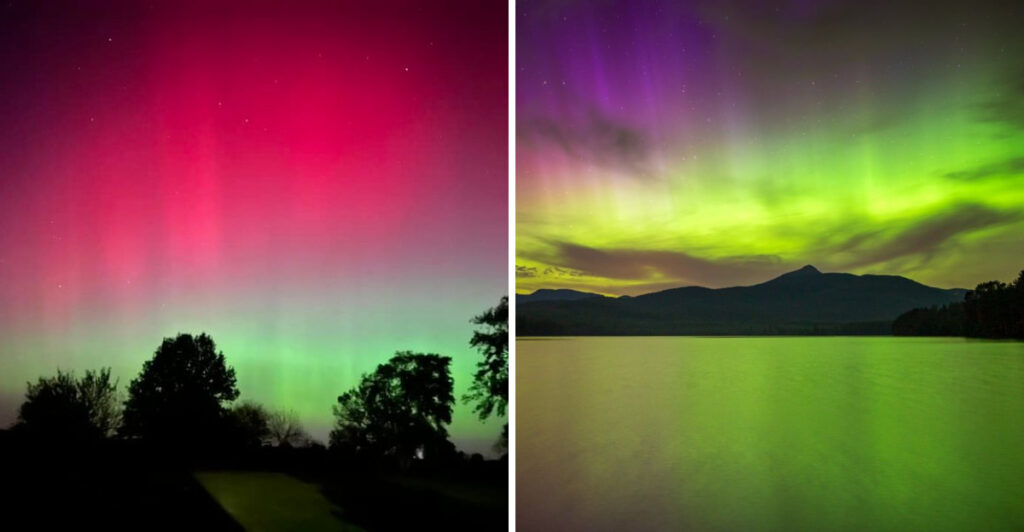Recent solar activity has increased the likelihood of observing the Northern Lights, or aurora borealis, in parts of the United States. A coronal mass ejection (CME) from the sun has triggered a strong geomagnetic storm, leading to auroral displays that may be visible in several northern U.S. states. The best viewing times are typically between 10 p.m. and 2 a.m. local time. To enhance your chances of witnessing this phenomenon, find a location away from city lights with clear, dark skies. Stay informed through reputable sources for the best opportunity to experience this rare and beautiful natural display.
Alaska
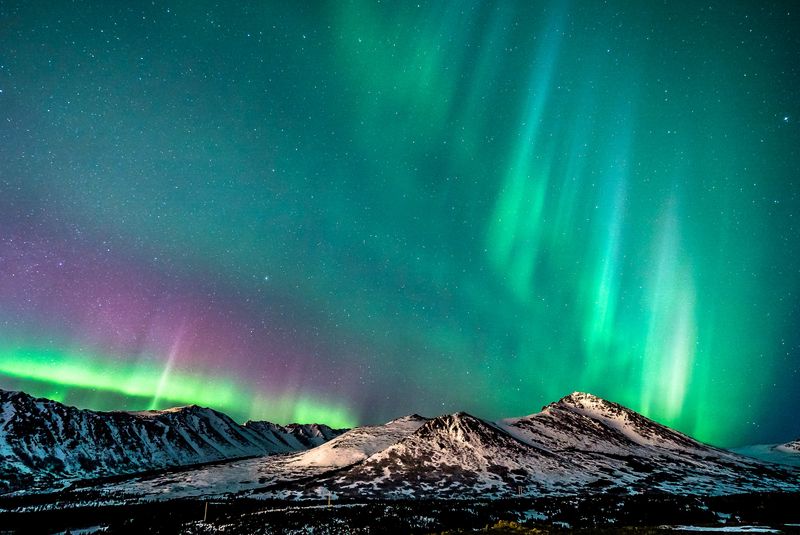
Imagine standing under an Alaskan sky, where the aurora borealis sweeps across with vibrant hues. Alaska offers one of the best views of this spectacle. Its vast wilderness and minimal light pollution create ideal conditions.
From the comfort of a cozy cabin or open ice fields, the Northern Lights dance vividly here. This natural wonder, coupled with the serene Alaskan landscape, provides an unforgettable experience.
For an optimal view, Fairbanks is a top spot. Did you know Fairbanks is reputed for having some of the most spectacular aurora displays?
Washington
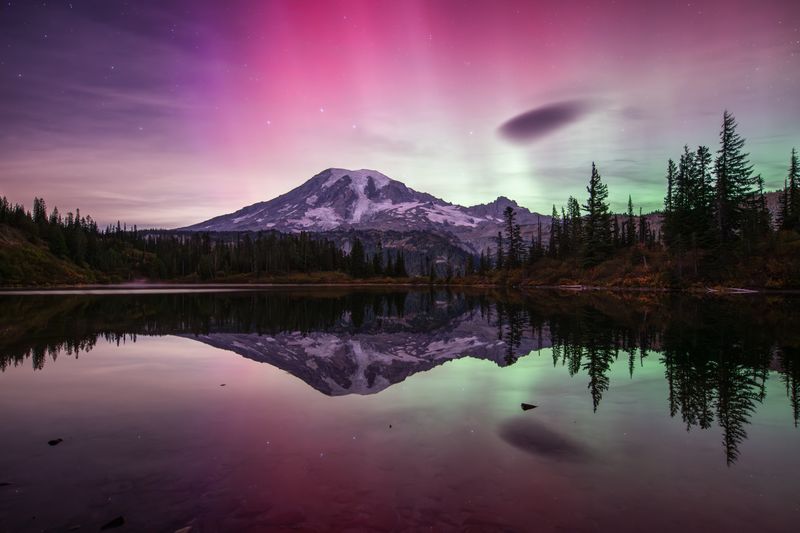
Washington State’s diverse landscapes offer a stunning backdrop for the aurora. Whether nestled in the Cascade Mountains or along the coast, the lights provide a magical view. The juxtaposition of natural beauty and celestial display creates an awe-inspiring sight.
Mount Rainier, often cloaked in snow, serves as a majestic foreground to the lights. It’s a favorite for photographers and nature enthusiasts alike.
Interestingly, locals often gather at popular vantage points like Rattlesnake Ledge, making it a communal event. Have you ever witnessed such a celestial gathering?
Montana
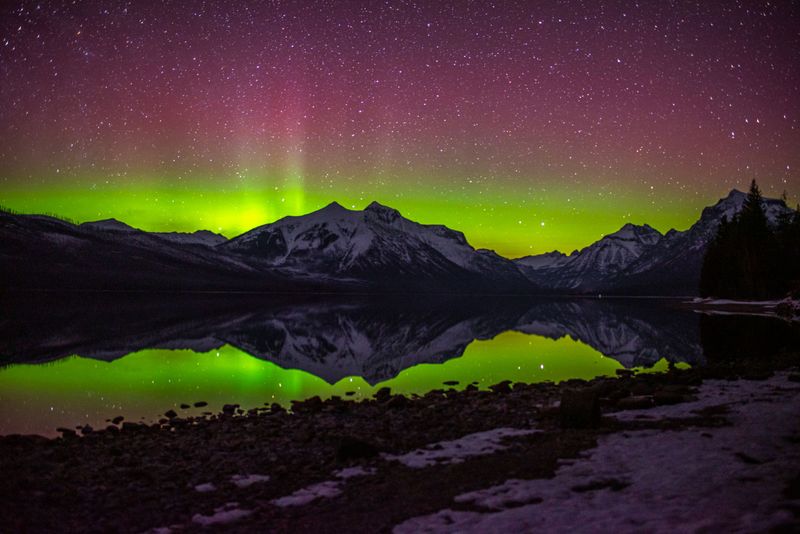
Montana, known as Big Sky Country, provides vast, open skies perfect for viewing the Northern Lights. The state’s clear atmosphere and minimal light interference make it a top choice.
Imagine lying on the wide plains, the aurora illuminating the sky above. It’s a serene, almost mystical experience unique to Montana’s landscape.
Travelers often flock to Glacier National Park, seeking both adventure and tranquility under the aurora’s glow. Did you know Glacier National Park offers one of the best natural light shows in the U.S.?
North Dakota
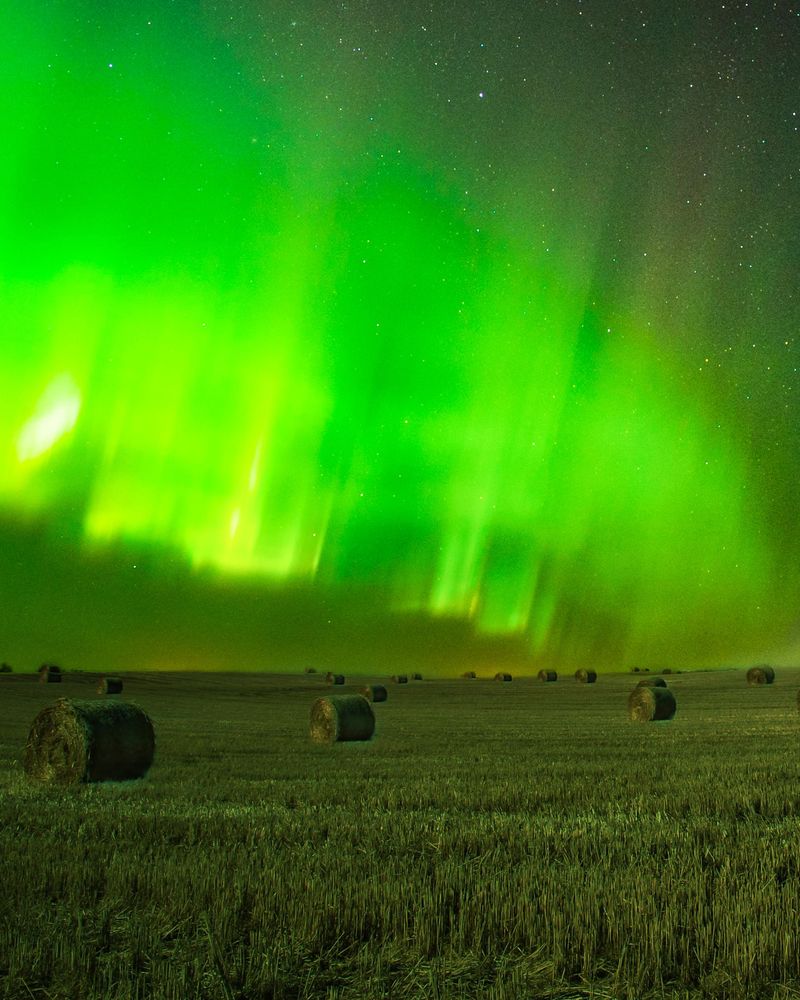
In North Dakota, the aurora borealis paints the sky with its ethereal colors. The relatively flat terrain and clear skies enhance visibility, making it a prime location for northern light chasers.
Fields stretch into the horizon, offering unobstructed views of the celestial phenomenon. The quiet, rural setting adds to the allure, creating a peaceful viewing experience.
Areas like Theodore Roosevelt National Park are hotspots for aurora enthusiasts. Fun fact: North Dakota’s dark sky is one of the least light-polluted in the United States, perfect for stargazing and aurora watching.
South Dakota
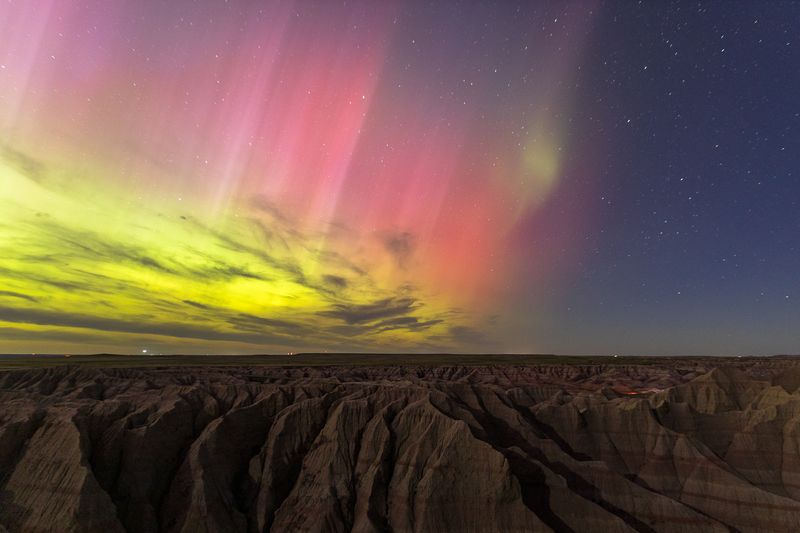
South Dakota’s Badlands offer not only unique geological formations but also spectacular views of the Northern Lights. The rugged beauty of the Badlands under a shimmering sky is breathtaking.
The park’s remote location ensures minimal light pollution, providing a clear view of the aurora. This natural wonder is a striking contrast against the jagged terrain of the Badlands.
Visitors often describe the aurora’s dance as mesmerizing above the surreal landscape. Did you know the Badlands were formed over millions of years by erosion? Now, they host celestial wonders!
Minnesota
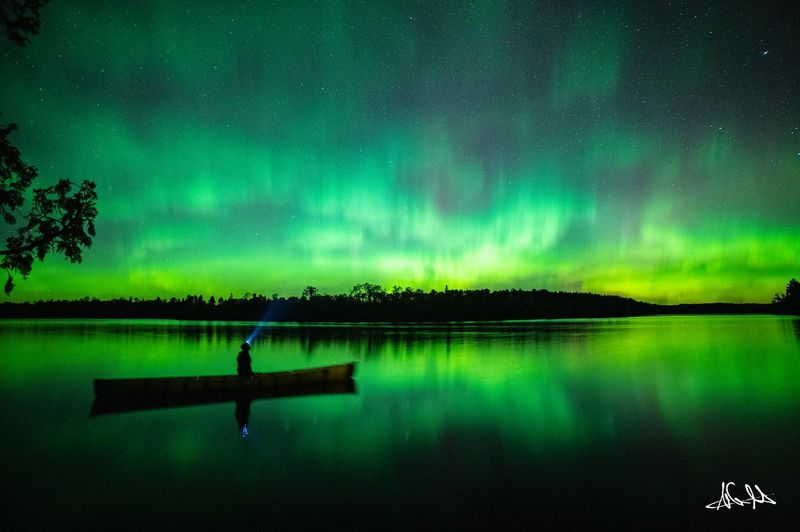
Minnesota, with its numerous lakes and forests, offers a picturesque setting for the Northern Lights. The Boundary Waters Canoe Area Wilderness is particularly popular for viewing the aurora.
Imagine paddling through calm waters under a sky lit by the aurora. The reflection on the water doubles the beauty of the lights.
This serene environment, combined with the ethereal glow of the Northern Lights, makes for a truly magical experience. Did you know Minnesota is home to over 10,000 lakes, each offering unique aurora viewing spots?
Wisconsin
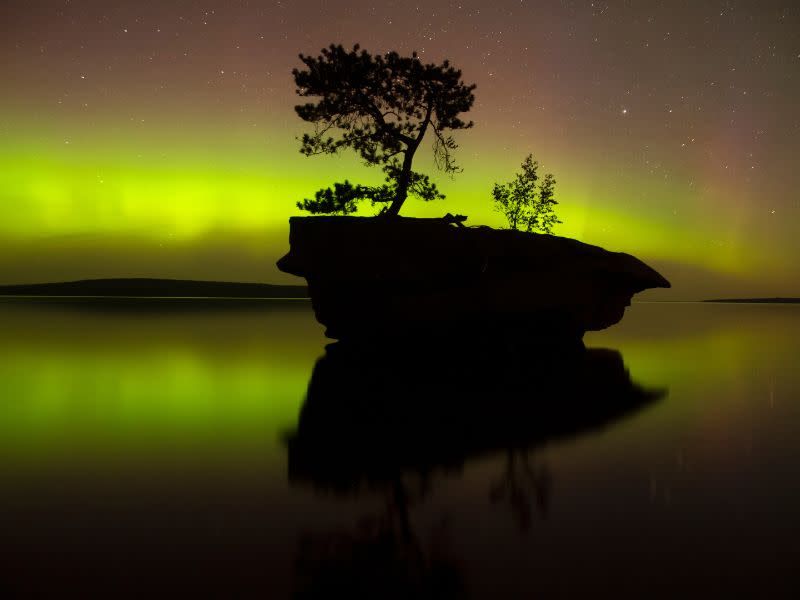
Wisconsin’s Apostle Islands offer a stunning backdrop for the Northern Lights. These islands, with their diverse landscapes, provide perfect spots for viewing the aurora.
The serenity of Lake Superior, combined with the vibrant aurora, creates a breathtaking scene. Visitors often find themselves captivated by the reflection of the lights on the water.
In fact, the Apostle Islands are renowned for their clear night skies, making them a favored destination for stargazers and aurora enthusiasts alike. Have you ever experienced such a magical sight?
Michigan
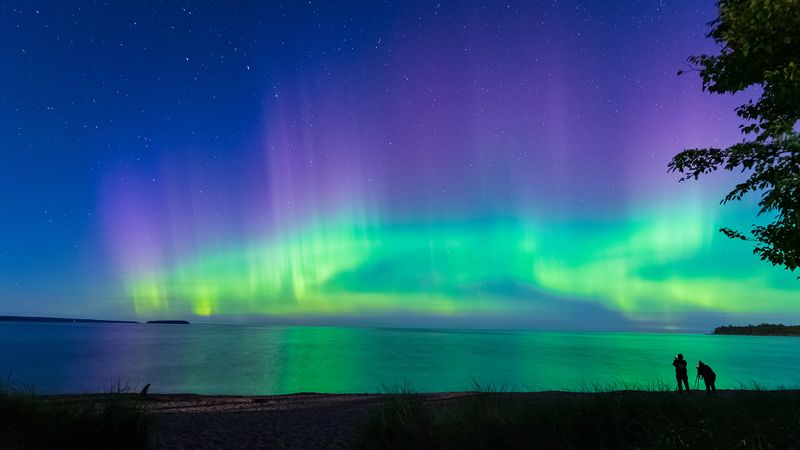
Michigan’s Upper Peninsula is a hotspot for aurora viewing, thanks to its dark skies and expansive forests. The region offers numerous vantage points to witness the celestial display.
Standing by the Great Lakes, the aurora’s reflection on the water is a sight to behold. Many gather here during geomagnetic storms for a chance to see the lights.
The combination of natural beauty and atmospheric conditions makes Michigan an excellent place for this phenomenon. Did you know the Upper Peninsula is considered one of the best places in the U.S. to see the Northern Lights?
Maine
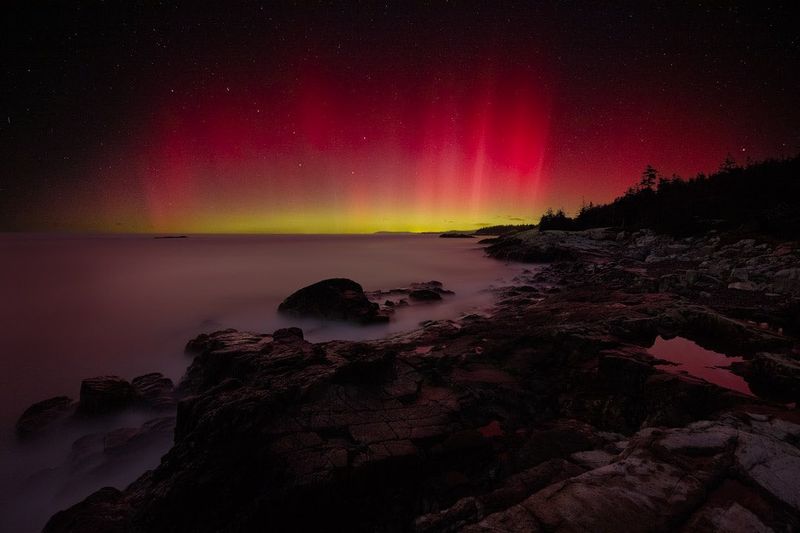
In Maine, Acadia National Park offers some of the most stunning views of the Northern Lights. The park’s rugged coastline and high vantage points make it an ideal location.
The dance of the lights over the Atlantic Ocean is truly mesmerizing. Visitors often describe the experience as both humbling and awe-inspiring.
Acadia’s remote setting ensures minimal light pollution, enhancing the visibility of this natural wonder. Fun fact: Acadia is one of the few national parks located along the Atlantic coast, offering unique aurora views over the sea.
New York
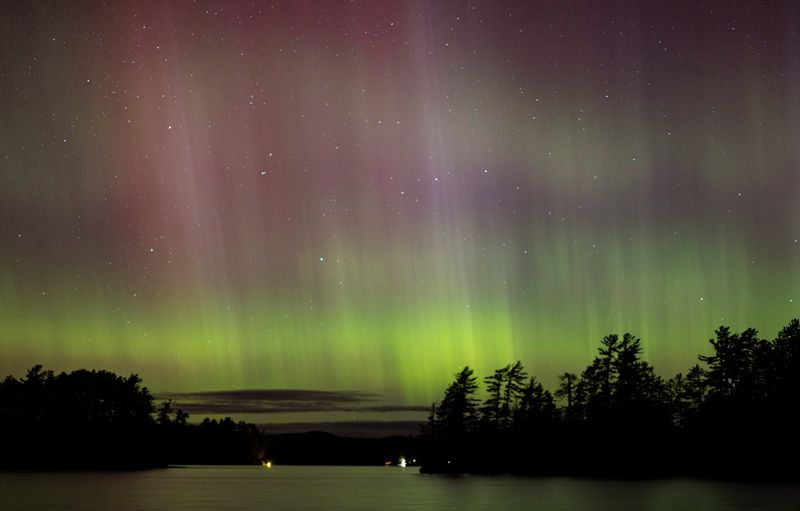
The Adirondack Mountains in New York provide an unexpected yet delightful setting for viewing the Northern Lights. The region’s high peaks and dark skies are perfect for this celestial spectacle.
Amidst the dense forests, the aurora paints the sky with its luminous colors, creating a magical atmosphere. It’s a rare and delightful experience for those who venture here.
The combination of mountainous terrain and natural beauty makes the Adirondacks a unique spot for aurora chasers. Did you know the Adirondacks are home to some of the darkest skies in the northeast?
Vermont
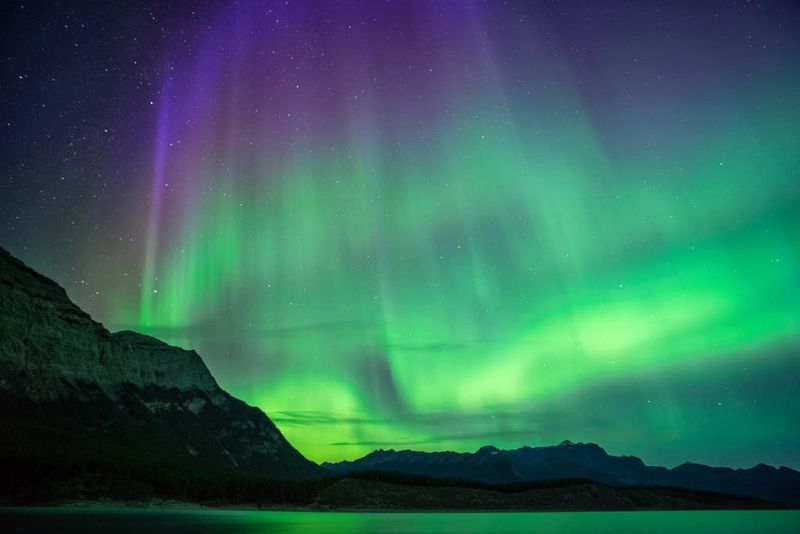
Vermont’s Green Mountains offer a picturesque backdrop for the Northern Lights. The state’s rural charm and clear skies make it an excellent location for this natural display.
As the aurora dances over the snow-covered peaks, it creates an enchanting scene that captivates all who witness it. The tranquillity of Vermont’s landscape adds to the charm.
Vermont’s commitment to preserving its dark skies makes it a preferred destination for aurora enthusiasts. Interesting fact: Vermont is one of the least populous states, ensuring minimal light pollution for optimal viewing.
New Hampshire

In New Hampshire, the White Mountains provide a stunning setting for observing the aurora borealis. The rugged peaks and clear skies create an ideal backdrop for this celestial phenomenon.
The Northern Lights, with their vibrant colors, transform the night sky into a living canvas. It’s a sight that attracts both locals and tourists alike.
This combination of natural beauty and celestial display offers a unique and memorable experience. Did you know the White Mountains are part of the northern Appalachian range, providing diverse landscapes for aurora viewing?
Idaho

Idaho’s expansive landscapes and clear night skies make it a favorable location for viewing the Northern Lights. The state’s rugged terrain provides a dramatic backdrop for the aurora.
Whether in the mountains or open plains, Idaho offers diverse settings for this celestial spectacle. The wide-open spaces allow for unobstructed views of the dancing lights.
Interestingly, Idaho’s commitment to preserving its natural beauty contributes to the pristine conditions ideal for aurora watchers. Have you ever experienced the Northern Lights against such a varied backdrop?
Wyoming
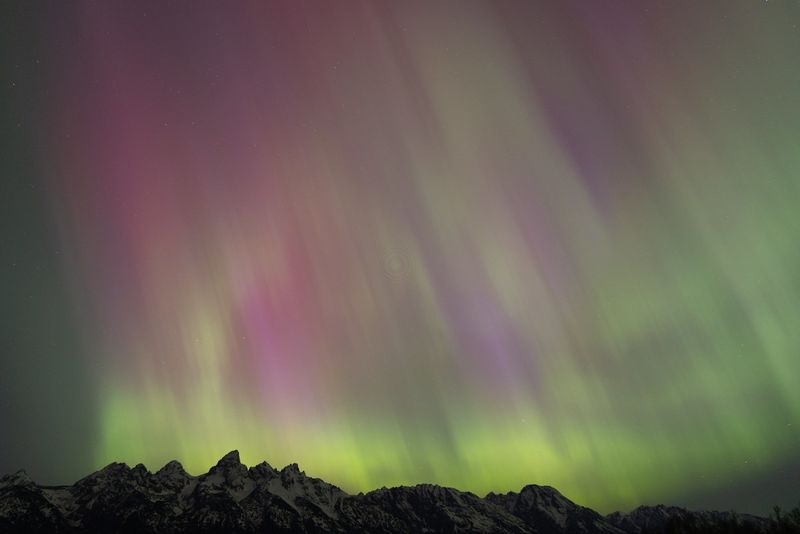
Wyoming’s Grand Teton National Park provides a breathtaking setting for witnessing the Northern Lights. The towering peaks and expansive skies enhance the beauty of this phenomenon.
The park’s remote location ensures minimal light pollution, offering clear views of the aurora. The combination of natural grandeur and the celestial display creates a truly magical experience.
Many visitors describe the sight as awe-inspiring, with the Northern Lights casting a glow over the rugged landscape. Did you know Grand Teton is renowned for its stunning vistas and diverse wildlife?
Iowa
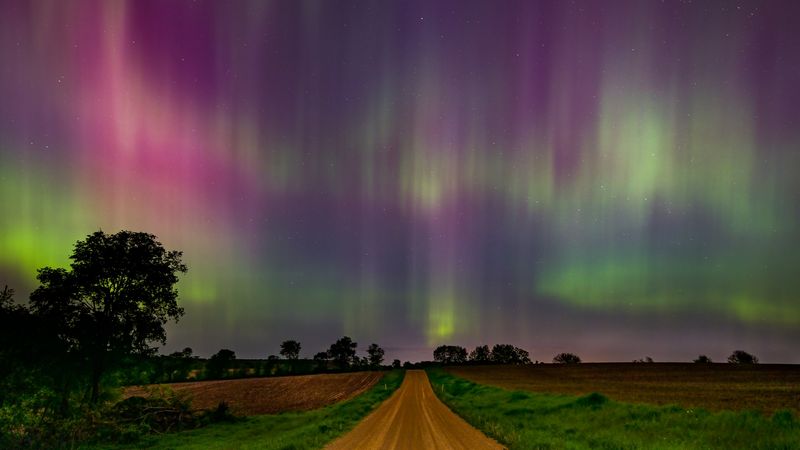
Iowa’s open farm fields provide an unexpected yet remarkable setting for the Northern Lights. The state’s flat terrain offers unobstructed views of the night sky.
As the aurora dances above, it creates a mesmerizing display against the rural backdrop. This serene setting adds a sense of tranquility to the viewing experience.
The simplicity of Iowa’s landscapes enhances the beauty of the Northern Lights, making it a memorable sight. Interesting fact: Iowa’s countryside is renowned for its beautiful sunsets, now complemented by occasional auroras.
Illinois
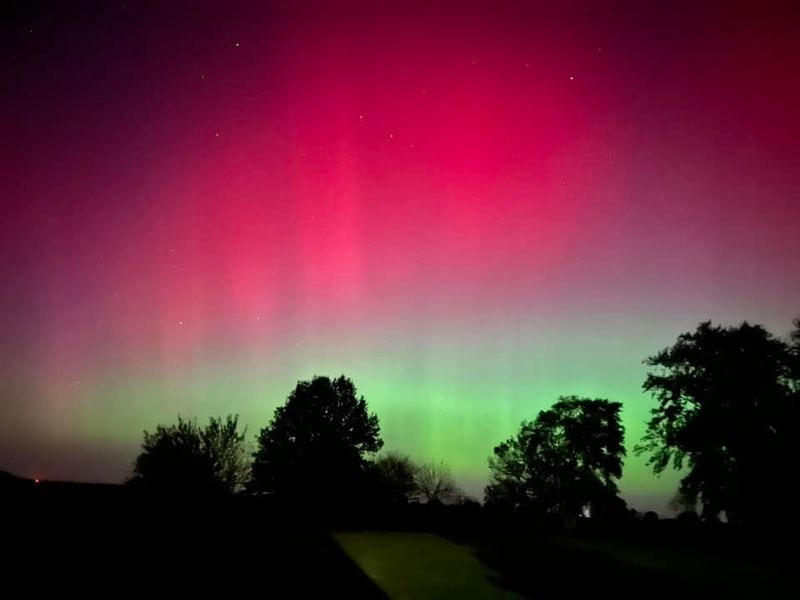
In Illinois, the Northern Lights can sometimes be seen from its more rural areas. The open fields and clear skies provide an excellent canvas for this phenomenon.
Away from city lights, the aurora’s vibrant colors become more pronounced, offering a spectacular view. It’s a rare treat for those living in or visiting the state.
The blend of farmland and celestial display creates a unique viewing experience. Did you know Illinois is often overlooked for aurora sightings, yet offers spectacular views during strong geomagnetic storms?
Maryland
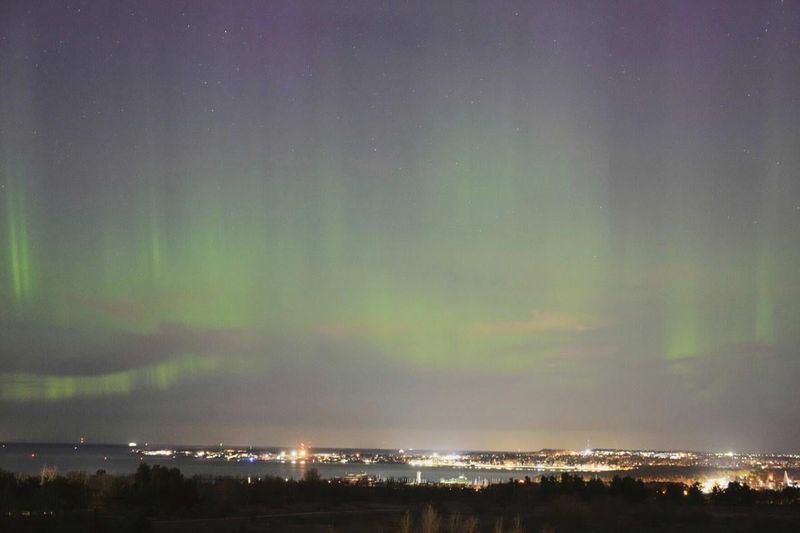
Maryland might not be the first place you think of for Northern Lights, yet during strong solar activity, the aurora can grace its skies. The state’s rural areas offer dark skies necessary for viewing.
As the lights shimmer above, they provide a rare and beautiful sight for locals. This unexpected celestial display often surprises and delights viewers.
Maryland’s blend of rural charm and celestial phenomena makes for an intriguing experience. Fun fact: During major geomagnetic storms, the aurora can sometimes be seen as far south as Maryland, adding to its allure.

